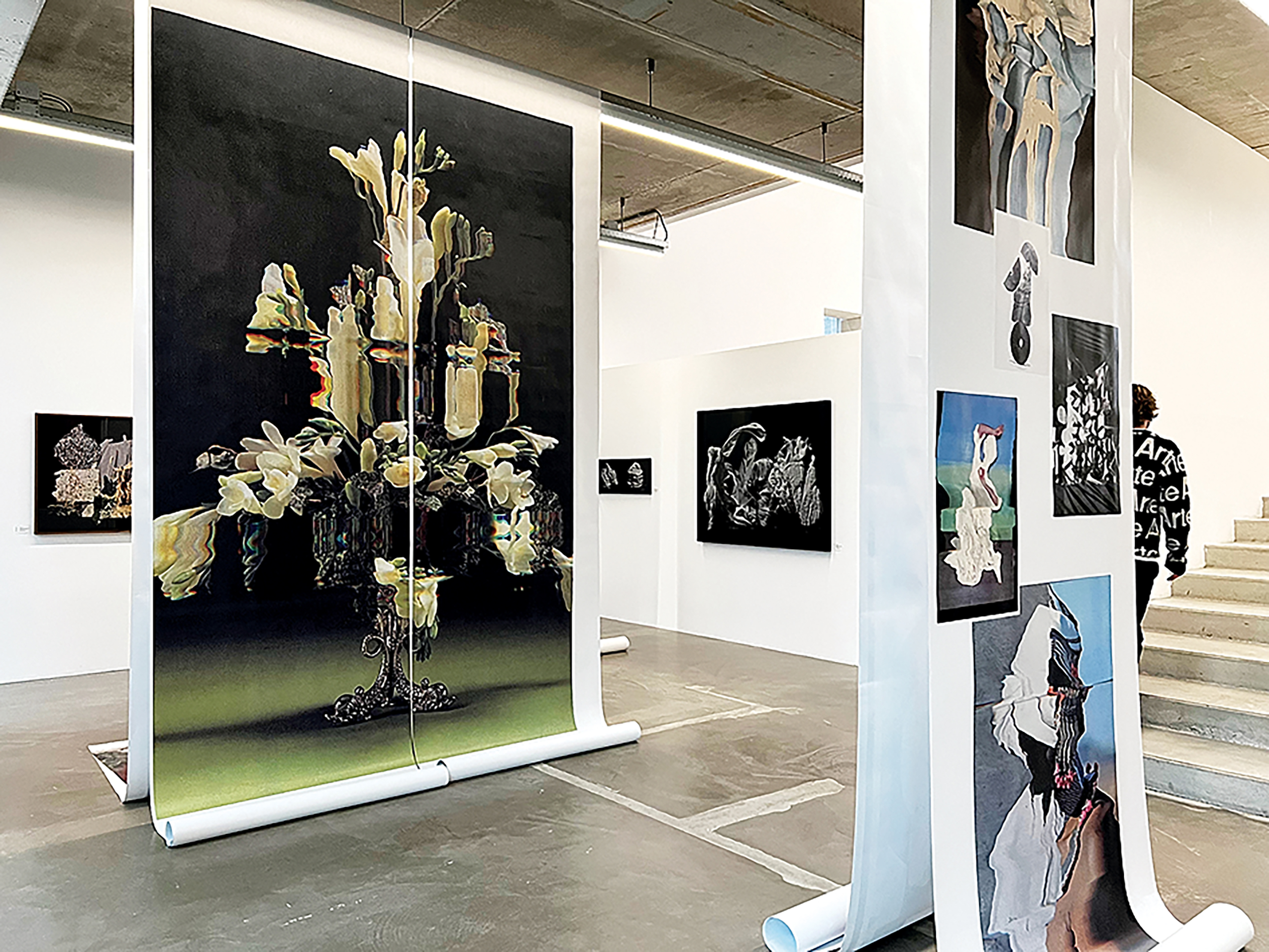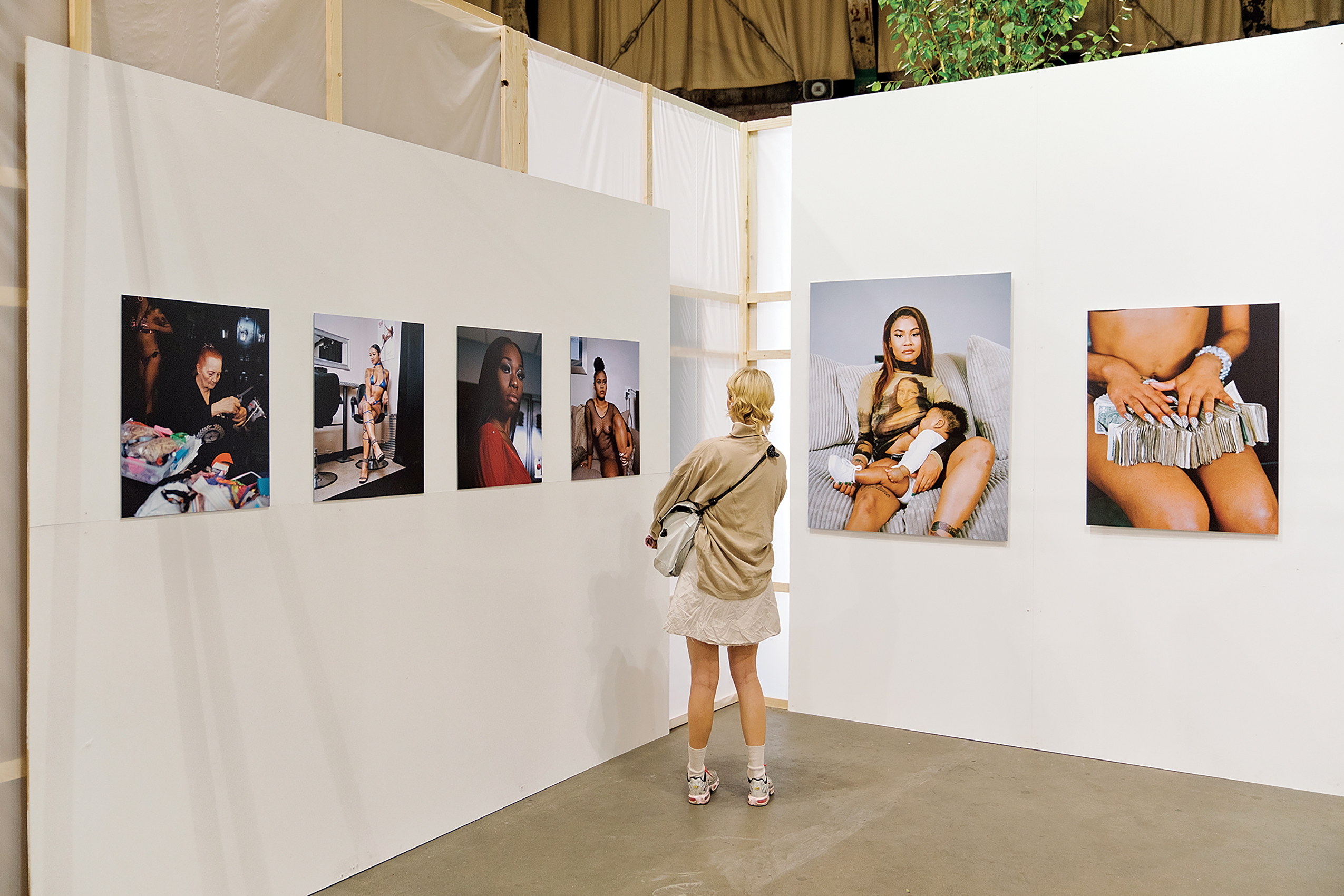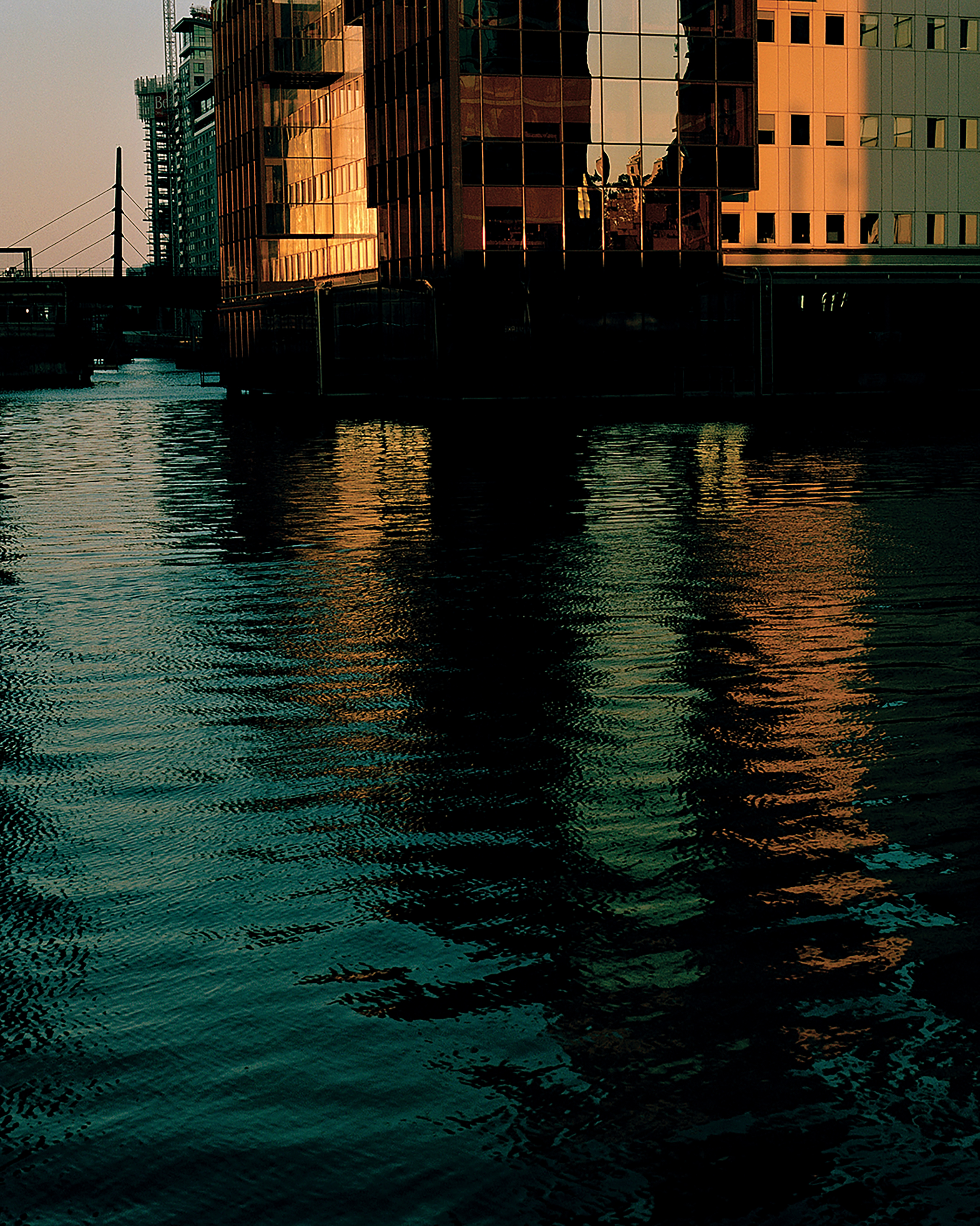UNTITLED, FROM THE SERIES HAVEN © SEM LANGENDIJK
As Unseen Amsterdam opens in the impressive Westergas cultural park, George H King highlights some of the Dutch capital’s less-known photography spaces and initiatives
If you spend enough time in Amsterdam, you will encounter a nostalgic generation of older residents speaking fondly of the city’s past – of its liberal freedoms, its unpolished surfaces, its anarchic edge, the absence of rules. This Amsterdam was a city of artists, squatters, subcultures and parties, its chaotic scenes and eccentric characters best chronicled in the street photography of Ed van der Elsken, the ‘enfant terrible’ of the Dutch scene.
Ulay, the rebellious German performance artist, also made this Amsterdam his home in the late 60s – trialling pioneering experiments with Polaroids, and in 1972 unfurling a giant photographic banner across the facade of a canal house (Herengracht 532) in protest against the petrochemicals industry. It was also at an Amsterdam hotel that John Lennon and Yoko Ono staged a leg of their performative Bed-In for Peace protest in 1969, calling for an end to the Vietnam War.
For a brief period I lived in the shadow of this hotel, in an apartment overlooked by the newly-weds’ honeymoon suite. Today, shuffling from home to temporary home is an all-too-familiar story for Amsterdam residents – low rates of corporate tax in the Netherlands have made the country an attractive destination for multinationals, living costs have risen dramatically in recent years, and the absence of affordable housing is well-documented.
Some of these contemporary concerns come together in Sem Langendijk’s Haven project, published as a book by The Eriskay Connection, and recently exhibited at Amsterdam’s celebrated Foam photography museum. Shot in the docklands of Amsterdam, New York and London, the project explores the steady decline of free-spirited communities on the fringes – the likes of which Langendijk grew up in – at the hands of economic interests and urban development projects, which promise renewal but all too often enact displacement.
Amsterdam is at a tipping point, and the question is how much longer it can really support a rich and varied cultural life, or constitute a hospitable environment for artists. But it remains alluring to visitors and, frustrations aside, there is still much to be excited about. Echoes of the city’s lost spirit occasionally rumble beneath its slick surfaces. Photographically speaking, there are two stellar photo museums in the aforementioned Foam and the nearby Huis Marseille, both situated on the same canal. Love it or loathe it, the World Press Photo Foundation is also based in Amsterdam, and often hosts events and exhibitions in the city.
More broadly, there is an appreciation here for photography that does not always exist elsewhere; the Netherlands remains a nation of keen collectors, who facilitate a healthy market for artworks, even by emerging names. The country’s historic traditions in bookmaking and graphic design make it a valuable hub for photobook production, while interesting programmes at several Dutch art academies generate a stream of exciting graduates, many primed to consider the critical function of imagery in society. Funding opportunities in the arts are also generous by most standards.
The following listings highlight Amsterdam’s lesser-known offerings, but it is important to note that in a country so small it is both easy and commonplace to commute elsewhere for an exhibition opening or panel discussion. Most cities offer phenomenal cultural destinations in most cities.


un/produced & un/fund
Eerste Keucheniusstraat 3,
1051 HN Amsterdam
un-produced.com
@un_produced; @un_fund
With a background in producing photographic shoots for a range of creative and commercial clients, Nottingham-born Rosie Donoghue became frustrated with many of the industry’s trappings – vague quotes seemed to sow distrust between suspicious clients and opportunistic production companies, while sizeable budgets did not always mean better payouts for the photographers involved. Likewise, she thought it ironic that photographers commissioned in the commercial sphere were generally identified on the basis of their personal projects – works which were made independently and often entirely self-financed.
In response, Donoghue went out alone in late 2021 to launch un/produced – a nonprofit, full-service production company based in Amsterdam. Beyond giving her clients full transparency as to where every penny is spent on each shoot, a 10 per cent production fee is earmarked for un/fund: an artist grant offering generous sums to its winners, selected via an annual open call. With an ethical outlook, Donoghue’s model proffers creative solutions to industry pitfalls. Accordingly, many are taking note. Working with photographers such as Annemarieke van Drimmelen, Chris Rhodes, Liv Liberg and Julia Noni, un/produced can already list A Magazine Curated By, Acne Paper, Valentino and Ann Demeulemeester as clients.
Artist-in-residence: Hanane El Ouardani
hananelouardani.com
@hananeelouardani
When Hanane El Ouardani’s grandfather first arrived in the Netherlands from Morocco, he belonged to a wave of so-called ‘guest workers’ – enticed from abroad to plug holes in a beleaguered Dutch labour force. Although his plan was always to return home, things went off-script: El Ouardani’s father, also born in Morocco, followed suit. “I’m not sure if that makes me a second- or third-generation immigrant,” reflects the Breda-born, Amsterdam-based artist. Complex questions such as this one, concerning identity and migration, as well as those of womanhood, underpin her photographic projects, a number of which remain in steady development.
I first encountered El Ouardani’s graduation project in book form, while shortlisting entries for the 2018 Unseen Dummy Award. The Skies Are Blue, The Walls Are Red gestured at the author’s thoughtful negotiation with her ancestral motherland, featuring bold but minimal graphic design, and tender portraits oozing with empathetic warmth. Just as impressive is her quiet resistance to repeating those tricks; since studying at The Hague’s Royal Academy of Art, El Ouardani has taken her time, downing tools altogether, trying her hand at curating, and rejecting expectations to turn out series after similar series. Two works in progress – one exploring the street markets of Brussels, Marseille and Casablanca, and another on the migrant workers propping up Kuwaiti society – should be all the stronger for it.

The Ravestijn Gallery
Westerdok 824, 1013 BV Amsterdam
theravestijngallery.com
@theravestijngallery
For an afternoon of exhibition-hopping, many of Amsterdam’s snug commercial galleries are found in the city’s Jordaan district, conveniently clustered on and around the quaint Hazenstraat. Now awash with sourdough and natural wine, this neighbourhood was first built to house Amsterdam’s working classes as the city grew exponentially in the 17th century. Of the galleries found here, a surprising number have either a photographic focus or represent top lens-based talent, including Galerie Caroline O’Breen (Anastasia Samoylova, Jaya Pelupessy); Galerie Bart (Isabelle Wenzel, Henk Wildschut); Bildhalle (Douglas Mandry, Albarrán Cabrera); and Galerie Wouter van Leeuwen (Raymond Meeks, Donovan Smallwood).
Across town at the Westerdok, The Ravestijn Gallery occupies a split-level space of concrete pillars and floor-toceiling glass, overlooking the IJ river to the north, and an idyllic houseboat-lined canal to the south. While the list of Ravestijn’s represented artists speaks for itself, the detailed precision of its presentations, right down to the careful framing of each work, is to be appreciated. Founded by Narda van ’t Veer and Jasper Bode in 2012, the gallery’s programme is solely photographic, privileging new and experimental approaches to the medium. Do not be surprised to find photographic prints combined with sculpture, ceramics, video works or bespoke installations, and if you’re lucky, you might catch a behind-the-scenes glimpse of the gallerists’ staggering (private) photobook library.
Enter Enter
Nieuwe Herengracht 11, 1011 RK Amsterdam
enter-enter.nl
@enter___enter
‘READ BOOKS, BUY BOOKS, BUY LOCAL’ urges the slogan on a viral poster campaign, dreamed up by revered local graphic designer Hans Gremmen; you may well have seen it in a bookshop near you. Gremmen is one half of the excellent Fw:Books, a leading Dutch photobook publisher, which itself forms a third of Enter Enter – a youngish not-for-profit space dedicated to ‘the art of the book’, co-run with Premiss and the brilliant Roma Publications.
With the publishers’ studios to the rear, Enter Enter’s exhibition space is friendly and unpretentious, offering curated publication-based displays that speak to key questions in the art-bookmaking sphere, and a dynamic programme of related talks. Its summer exhibition showcased Aperture’s newly-launched Ari Marcopoulos monograph alongside 32 of the artist’s unpublished zines, for example, with a hands-on reading room to boot. While there are always printed treasures to discover, no books are sold here – when launching the venue in 2019, the founders had no interest in providing further competition for struggling independent retailers.
Athenaeum Boekhandel & Nieuwscentrum
Spui 14–16, 1012 XA Amsterdam
athenaeum.nl
@athenaeumboekhandel
On a busy cobbled square in the heart of the city, this fantastic bookshop-cum-newsstand is a magnet for magazine enthusiasts; its staff describe the store as a kind of ‘living room’ for Amsterdam’s culture-lovers. With a mind-boggling selection, from tiny hand-bound artists’ zines to widely circulated glossy fashion titles – and literally everything in between – barely a week goes by in which this writer does not pay a visit.
The staff here understand the importance of platforming small publishers and individual voices. “There are several buyers for books and magazines, and many different motives lie behind their selections,” explains Marieke van Ekeren. “What can we surprise customers with? What topics do we think are important to pay attention to?” In many instances, the shop’s window displays, book launches and intimate talks, organised in collaboration with publishers, offer a physical forum for timely conversations first staged on the printed page.

Unfair
Klönneplein 1, 1014 DD Amsterdam
unfair.nl
@unfair_amsterdam
Unseen is surely Amsterdam’s best-known photography fair, where an international crop of participating galleries present contemporary photographic works to visiting collectors, in a refreshingly laid-back atmosphere. While Unseen’s early efforts to introduce emerging photographers to market were forward-thinking, another beloved Amsterdam event – Unfair – is even more subversive in its dismantling of the art-fair blueprint. Taking over the same former gasworks that hosts Unseen, Unfair was founded by artists, instilling each edition with a playful, experimental edge.
Even the fair’s architectural design is selected from a pool of public submissions, and later installed collaboratively with the participating artists. When doors open, artists represent themselves; no galleries are present here to take care of sales. In November, Unfair23 marks the platform’s 10th anniversary – this year’s iteration will feature over 60 artists, focusing on those who graduated in challenging times (the Covid 19 pandemic, for instance, or the 2008 financial crisis). While Unfair features practitioners of all kinds, lens-based artists are always well-represented.
UNSEEN AMSTERDAM IS OPEN FROM 21 – 24 SEPTEMBER AT WESTERGAS, KLONNEPLEIN 1, AMSTERDAM. FOR MORE INFORMATION VISIT UNSEENAMSTERDAM.COM

